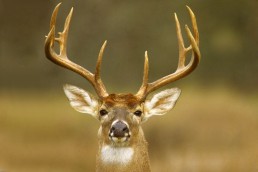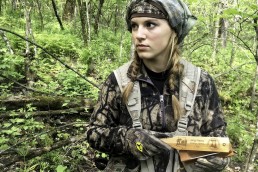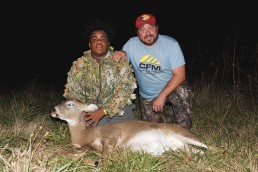Pope and Young Scoring System
SHARE THIS POST
Whenever you get around a group of deer hunters, you will often hear about bucks that, by description, seem impossible—a 28-pointer or a rack that can only be described with outstretched arms; or, the main beams “as thick as …” well, you name it.
Most of these stories are fun to hear, and tempt the listener to embellish a story or two of their own. However, at the end of the conversation, no one has any idea of just how big the different animals being described actually were. Or for that matter, how a 28-pointer buck would compare to a massive 12-point buck.
But with all this misguided information going around, just how can a hunting archer compare his or her trophy class animal to others?
This confusion started a long time ago within the gun hunting community and a system was needed to clear the air so that different bucks taken in various parts of the country could in fact be compared in such a way that was “clear” to all.
The system developed for the comparison of big game animals became known as the “Boone and Crockett” measuring system. This system was named after two very famous hunters: Daniel Boone and Davey Crockett. This includes a mathematical system of measuring using inches as its base unit where both positive measurements and negative measurements are compiled and then added together form the final score for that animal. An official scorer for the system makes the measurements.
Each big game animal has a unique method of scoring, which results in a total number and used for comparison. For each big game animal species, a minimum score was established for entry into the record book of big game animals.
For a lot of species, such as a bear or a cat, the scoring is quite simple. The length and the width of the skull is measured, and totaled. For a species that has antlers, a different system had to be developed to take into account the varied growths of the particular animal in question. The deer species was difficult, because the antlers can grow in very different ways. So, a typical antler rack was established for scoring purposes, as well as a non-typical antler rack. Each rack was assigned a minimum score for inclusion into the record book.
This system works just fine for scoring big game animals, and is still used today. And, there is no requirement for a certain weapon in the taking of a big game animal for this process. But at the time that it was established, the rifle was assumed.
Are you enjoying this post?
You can be among the first to get the latest info on where to go, what to use and how to use it!
When archery hunting for big game took off in a big way, another system was needed that had a weapon incorporated—the animal had to be taken with a bow and arrow under the rules of fair chase.
Adopting the Boone and Crockett system seemed a good idea—since it was a proven system—but the problem lay in the fact that the minimum score for a big game animal was too high for the hunting archer. Since the hunting archer was committed to a short-range weapon, the minimum scores had to be adjusted to accommodate this weapon. New minimums were established for animals taken with a bow and arrow, and to differentiate this scoring system from the Boone and Crockett system, it was named the “Pope and Young” system. The name was selected from early archery hunters, Saxon Pope and Art Young. These two men had a good deal to do with establishing an archery season for archers, so it made sense to honor them by naming the scoring system after them. (A large animal taken with the bow and arrow, which can reach minimum standards for inclusion in the Boone and Crockett record book, can be included in both record books.)
How does all of this apply to the average hunting archer?
If you’re only interested in hunting white-tailed deer for the challenge of the hunt or with the goal or reward of some great venison, then all of this is a moot point—you are really not interested in a score. For this hunter, the doe is just as important as the buck, and females are not scored. This is still a large part of the hunting community, as the taking of any big game with a bow and arrow is a feat in and of itself.
However, there are those who hunt for trophy-size animals, especially bucks. For these hunters, they are interested in the score size of the rack. These hunters for a long time have familiarized themselves with the scoring system used by Pope and Young measurers, and can estimate the score size of a buck in the field. There is little or no doubt in their minds when sizing up an animal as to whether or not they will take a shot, if one presents itself.
Using the ears a guide, they can guess at the width of the main beams; the height of the tines can also be estimated. They can measure and use the mass of the main beams, as well as how symmetrical the rack is, from one side to the other.
All these variables are important in the scoring of a deer’s antlers. Should a hunting archer be caught in a spot where there is more than one potential buck, which is deemed “shootable,” then they have to make the decision as to which one to concentrate on. This can be a very enviable predicament that does happen at times. Should you ever become interested in trophy-class hunting, you would do well to learn these skills of field estimating.
MWO
SHARE THIS POST
Did you enjoy this post?
You can be among the first to get the latest info on where to go, what to use and how to use it!
Bob Gorge
Bob Gorge is an avid bowhunter, with many big game animals to his credit. He has been an official big game scorer. He’s also a long-time archery instructor, working with several different organizations. As an instructor, he runs the gamut, working with everyone from seasoned bowhunters to beginning children.




Greate post. Keep writing such kind of information on your site. Im really impressed by your site.